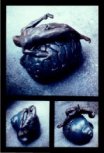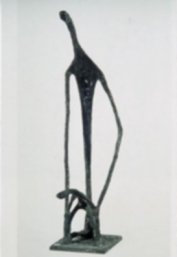Room 5: Zanaat
 Epilepsy motifs in painting
Epilepsy motifs in painting
- Holy Healers
- Ex voto - Tahta üzerine yapılmıs¸ tablolar
- I˙sa’nın sarayı tedavi edis¸i
- Dini sanat eserleri - "Epilepsy surgery" from ancient Greek and Roman times, and from the Middle Ages
- Dig˘er kültürlerin, epilepsi motifleri
- Modern tablolar
 Literaturliste: Epilepsy motifs in
narrative literature
Literaturliste: Epilepsy motifs in
narrative literature ![]()
For more details, click on the pictures!
Ex voto - Tahta üzerine yapılmıs¸ tablolar
Tahta üzerine resmedilmis¸ tablolar: 17. Yüzyıldan
bugüne kadar, Hıristiyanların dini inançlarında
büyük bir rol oynamıs¸tır.Bunlar genellikle tahta levhalar üzerine yapılmıs¸, yalvarmaya sebep olan durumları içeren; hastalık,kaza, harp sefaleti tablolarıdır. Bazıları da ; kutsal insanlardan merhamet dilemelerini içerir.
Tablolar; genel olarak kiliselerde, ziyaretgahlarda elde edilen merhametin veya yemin etmenin (“Verlobung” I˙sa ile nis¸anlanmanın) sembolüdür.
 |
 |

|
 |
 |
|
Alt-Ötting, Bavaria |
epileptic girl, |
Votive tablet from 1668 |
Verre églomisé picture |
Majolika tablet |
 |
 |
 |
||
|
Saint Antonius |
Saint Valentin and the Virgin Mary |
Votive tablet from 1766 |
I˙sa’nın sarayı tedavi edis¸i
Orta çag˘ ve Renaissance devrinde; sanat eserlerinin temalarını, genellikle dini motifler tes¸kil ederdi.Bunlar, çog˘unlukla siparis¸le yapılan ve siparis¸i verenin isteg˘ini canlandıran eserlerdi.Yaptıran sebep ise, tanrının veya azizlerin göstermis¸ oldug˘u merhamet ve yardımıydı. Bu tabloların içerig˘i ve yapılıs¸ s¸ekli, siparis¸i verenin istikbali hakkında ki sonucu anlamaya izin verir (“Schutzpatrone für Epilepsie” epilepsinin koruyucusu).
 |
 |
 |
||
|
Miniature |
Tablet around 1750 |
The transfiguration |
Dini sanat eserleri
 |
 |
 |
 |
 |
|
Saint Valentin |
Saint Bernhard |
The Healing of a Woman with the Falling Sickness. |
Saint Cyriakus |
Saint Severin |
 |
||||
|
Saint Ubald of Gubbio. |
"Epilepsy surgery" from ancient Greek and Roman times, and from the Middle Ages
 |
 |
 |
|
The stone-cutter |
"Epilepticus sic curabitur" |
El Bosco (1460-1516) |
Dig˘er kültürlerin, epilepsi motifleri
 |
 |
|
Tlazolteotl |
Capac Yupanqui's wife |
Modern tablolar
 |
 |
 |
||
|
Hommage to Vincent |
The Symbolism of Epilepsy |
What is it? |
Epilepsiye motif olan oymalar
 |
 |
 |
||
|
Falling sickness I |
The Samaritan |
Your mind is your force |

